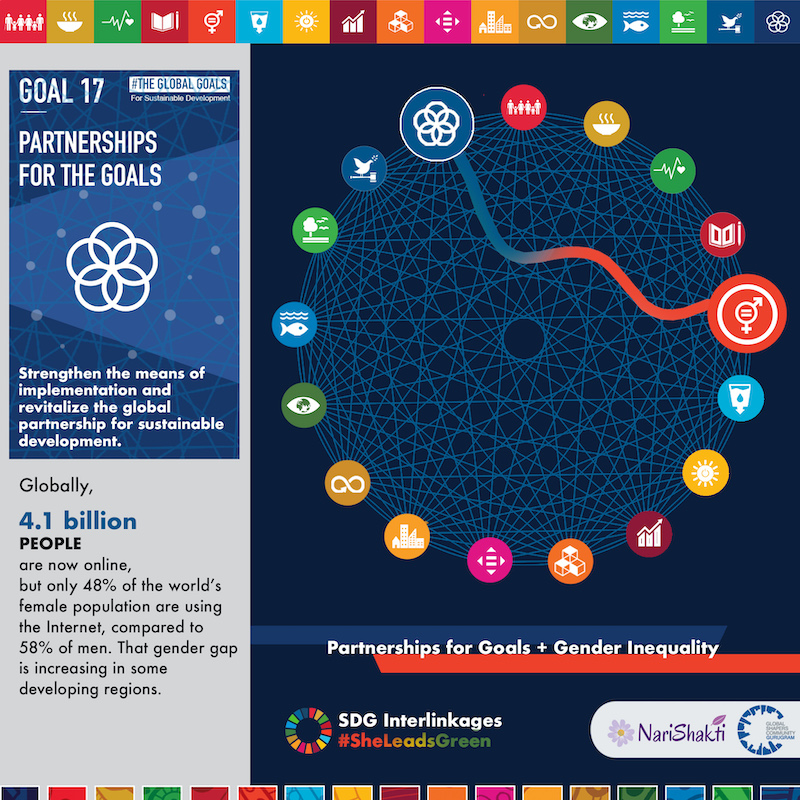
Gender parity and partnership for the goals (SDG 17)

Why do we need to look at partnerships from a gender lens?
- Financing for the SDGs as key to gender equality.
- Economic inequalities can be magnified by taxation. Investment in public services are critical for the rights of girls and women.
- Research shows that 57 million unpaid workers, mostly women, fill the gaps caused by inadequate healthcare provision.
How is partnerships and gender-linked?
There are 19 targets and 25 indicators to achieve SDG 17. None of the 25 indicators are gender-specific.
- Though governments have been using gender-responsive allocation of direct funds to programmes benefitting women, there are huge funding gaps in what’s needed by women and what’s provided. It was found that only 5 percent of foreign aid funds had gender equality as a principal objective in 2012-2013.
- Women are inclined to spend more money on goods subject to VAT, including food, fuel, children’s clothes, and school accessories, as well as medicines.
- A greater proportion of VAT in the tax mix, can have a greater impact on women, due to the burden of VAT.
- Social assistance is important for women with economic and social vulnerabilities who bear a greater burden of care in their families.
- Gender statistics covering various dimensions such as demography, education, health, access to economic opportunities etc. are vital for responsible policy decisions that improve the lives of women. The data however, that reflects basic aspects of girls’ and women’s lives is lacking, uncollected, or unpublished in many contexts.
What outcomes can we achieve in SDG 17 if we reach gender parity?
- Mobilisation of resources for public services is imperative for gender equality commitments. Being central to all of the SDGs, gender equality needs more attention from government and civil society partnership as women end up on the short end of the means of implementation, in all forms.
- Financing for the SDGs is hardly ever seen as key to gender equality. Slashing services and provisions pertaining to health, education, social services and social protection are significantly damaging for women.
- Direct taxation can be more equitable if the rich people and entities pay more. Indirect taxation on goods and services, such as Value Added Tax (VAT) which dominates the tax base in developing countries can be regressive, with the poorest and women among them, paying proportionately more.
- Many countries lack knowledge regarding access of basic amenities to women citizens. About 30% countries have an organized record for gender statistics, considering that sex-disaggregated data is critical to finding ways to achieve gender equality.
- Women have the right to benefit from all means of implementation. Women need to lead the decision making process whether in ministries or policy making think tanks, statistical offices or institutions involved in the process.
References


